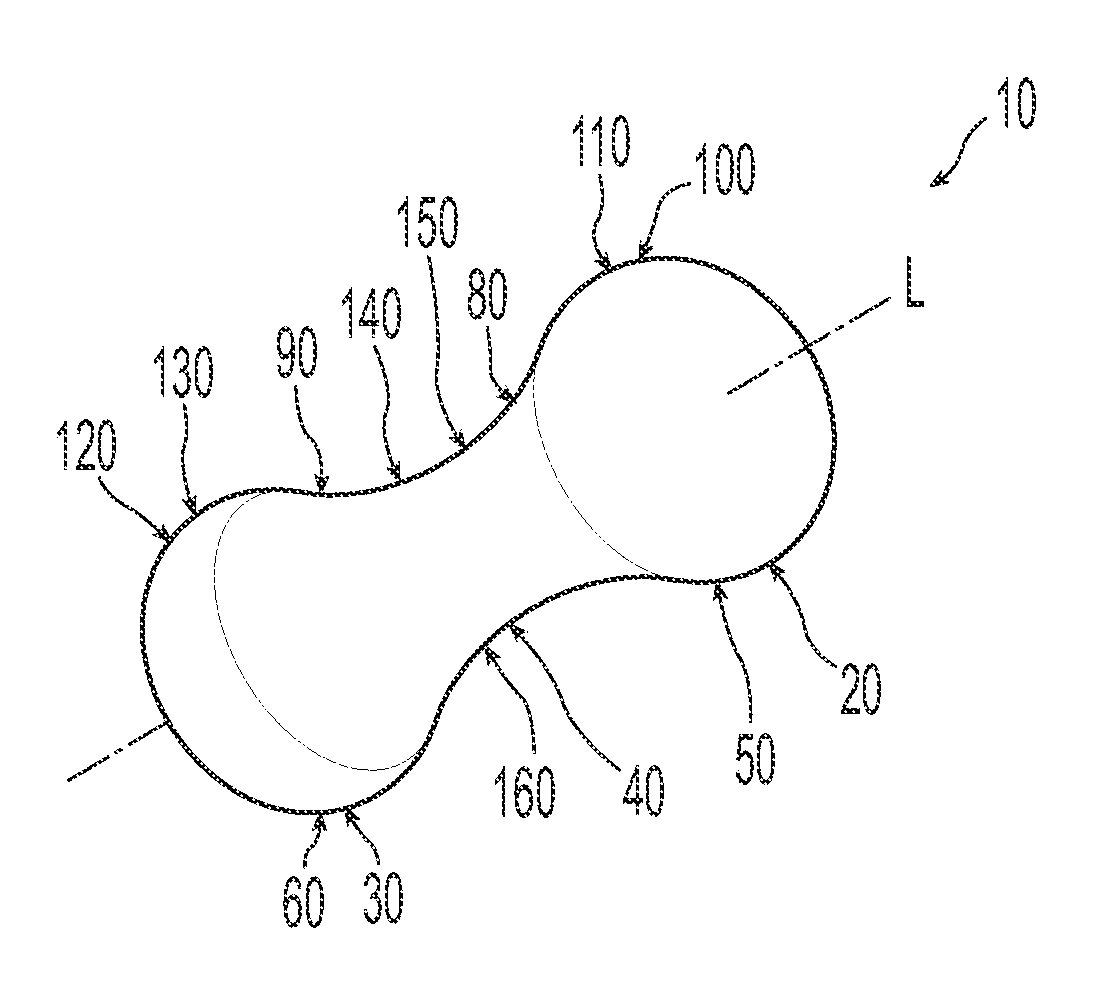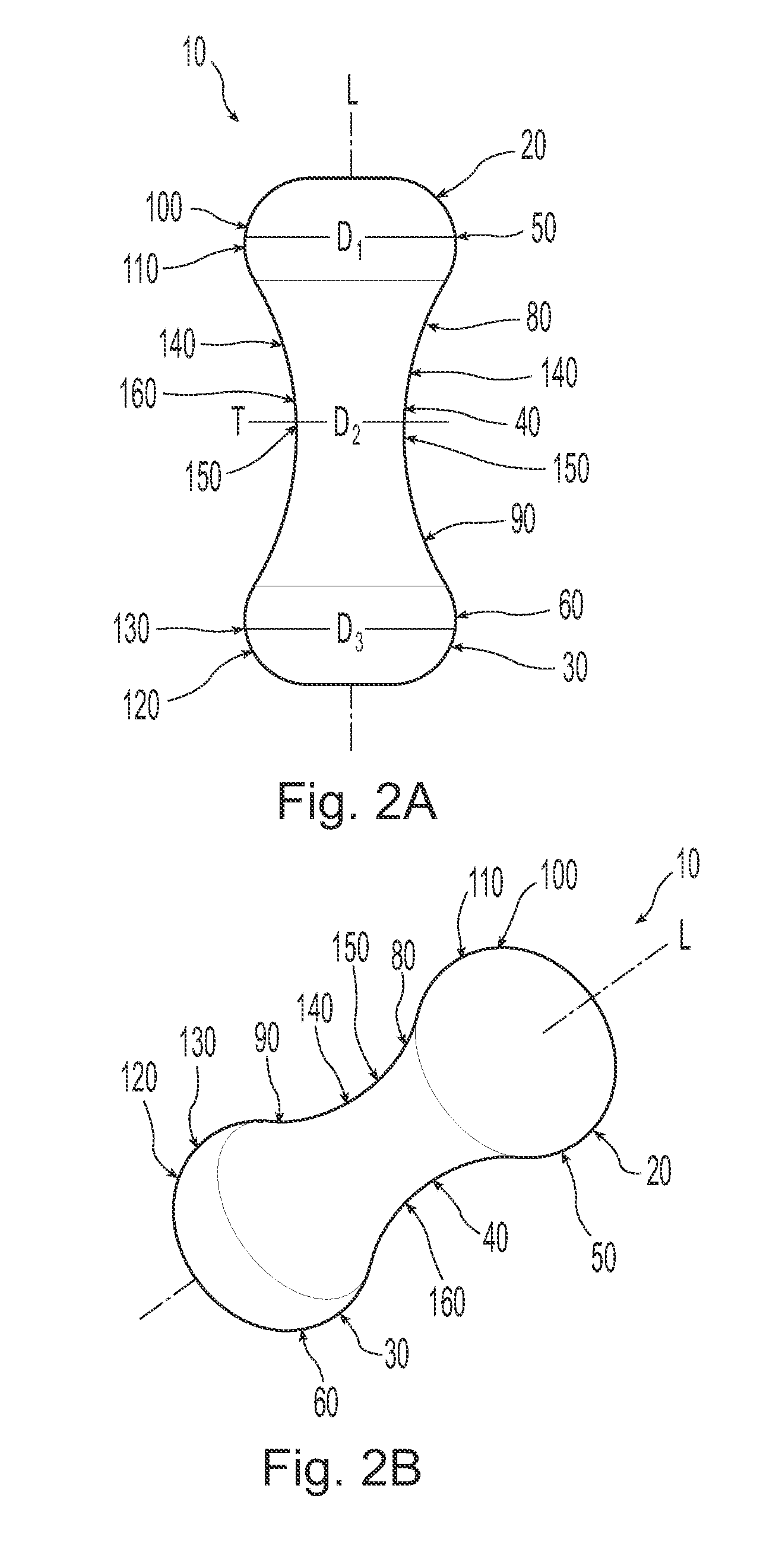Method for treating urinary incontinence
a technology for urinary incontinence and treatment methods, applied in the field of treatment methods for urinary incontinence, can solve the problems of urinary incontinence, common malady among women, uncomfortable pessary devices, etc., and achieve the effect of reducing urinary incontinence and reducing urinary incontinen
- Summary
- Abstract
- Description
- Claims
- Application Information
AI Technical Summary
Benefits of technology
Problems solved by technology
Method used
Image
Examples
Embodiment Construction
[0019]The present invention is directed to methods for reducing urinary incontinence in a female. The methods employ pessary devices that are inserted into the female vagina to help control involuntary urinary incontinence. The pessary devices are non-expandable, small in size, and can provide improved comfort during use. The pessary devices can include a pressure region adapted to extend between an anterior vaginal wall and a posterior vaginal wall of a user to provide pressure on the user's urethra through the vaginal wall. The pressure region includes the maximum diameter of the pessary, wherein the maximum diameter is less than 25 mm. The pessary device also can include a second pressure region provided distal from the first pressure region. The pessary device is retained within the woman's vagina for a suitable length of time, such as, for example, about 6 to about 12 hours, then is removed and disposed. A second pessary device is then inserted into the woman's vagina.
[0020]A w...
PUM
 Login to View More
Login to View More Abstract
Description
Claims
Application Information
 Login to View More
Login to View More - R&D
- Intellectual Property
- Life Sciences
- Materials
- Tech Scout
- Unparalleled Data Quality
- Higher Quality Content
- 60% Fewer Hallucinations
Browse by: Latest US Patents, China's latest patents, Technical Efficacy Thesaurus, Application Domain, Technology Topic, Popular Technical Reports.
© 2025 PatSnap. All rights reserved.Legal|Privacy policy|Modern Slavery Act Transparency Statement|Sitemap|About US| Contact US: help@patsnap.com



